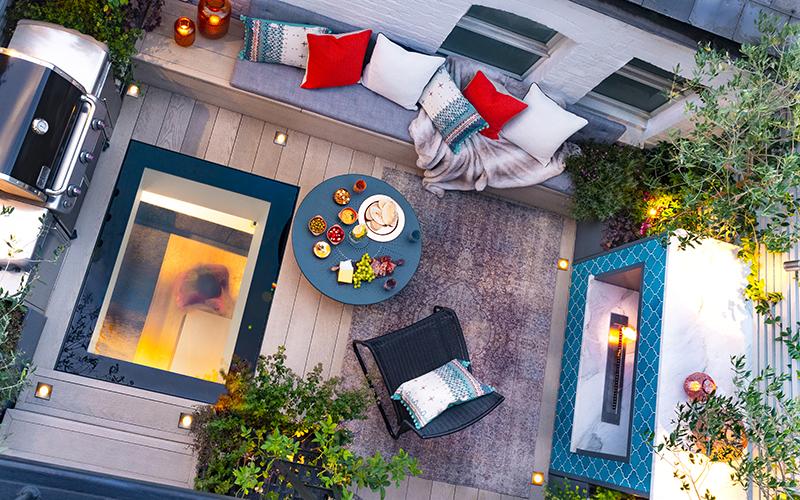
Kate Gould MBALI on making small design spaces work
With a rise in demand for garden designers during lockdown over the past few months, we talk to BALI Registered Designer member Kate Gould MBALI who provides an insight into the importance of making the most out of small design spaces.
Daunting for Designers?
Designing small outside spaces can often seem daunting and complex, but much like their larger cousins the devil is in the detail and the most successful spaces are those that fit perfectly both their allotted spaces as well as their owners lifestyle. When space is at a premium, be that a small back garden, rooftop or basement - how that space will function and what will thrive in it will be vital in creating a successful garden that your clients will enjoy, hopefully all year round.
Go big or stay small?
Many clients think that maximising space means pushing everything to the boundaries and making the available planting space around the edges very small. It can often be difficult to impress upon clients how this will actually make the space feel quite the opposite and indeed much smaller and pinched and that being bolder and creating areas where larger plants can thrive will in effect, make the garden feel far more generous and ultimately a more successful and visually appealing space to be in. This bold approach runs true for furniture and pots too. Supersizing elements in a small space is always preferable to lots of smaller items which can look cluttered and busy. Less can very much be more both in terms of hard and soft landscaping.
Bringing your home outdoors...
A small garden can completely revolutionise a home and increase living spaces for clients, especially now we experience warmer spring and summer weather making outside living much more enticing. All the creature comforts of our homes are making their way outside but modern furniture is often large and consumes much of the floor area in a small garden. The balance between the wishes for furniture, outdoor kitchens, fireplaces and spas has to be balanced with greenery for a space to function as a garden and not a furniture showroom. Seen, often in one glance, though bifold doors and large expanses of glass, planting with a good strong evergreen (or winter interest) palette that can be added to with colour through the seasons and planting that provides screening and privacy from upper storeys of neighbouring properties is vital to avoid the ‘goldfish bowl’ effect of being in a garden but being overlooked. Often achievable with planting alone (tree ferns if you have shade are particularly effective) this overhead screening cocoons you in the garden making the space feel private and much more pleasant to be in which has perhaps become more important still since the presence of Covid19. Gardens are extensions of the home but in the past three months they have become extensions of our health and well-being. Even the smallest of outside spaces has become a haven and long may this continue.
Think of the environment
Planted well, even in containers whether it is ornamental or vegetable-based, a small garden can be equally as useable and in tune with its environment as a large garden. Don’t think of a small space as a hindrance; instead, be enthused by the challenge of fitting a quart into a pint pot and in towns and cities helping to join the dots of green pockets that create cooler spaces for humans to inhabit as well as environmental corridors for the wildlife we share our world with.
Image credit Helen Fickling.
